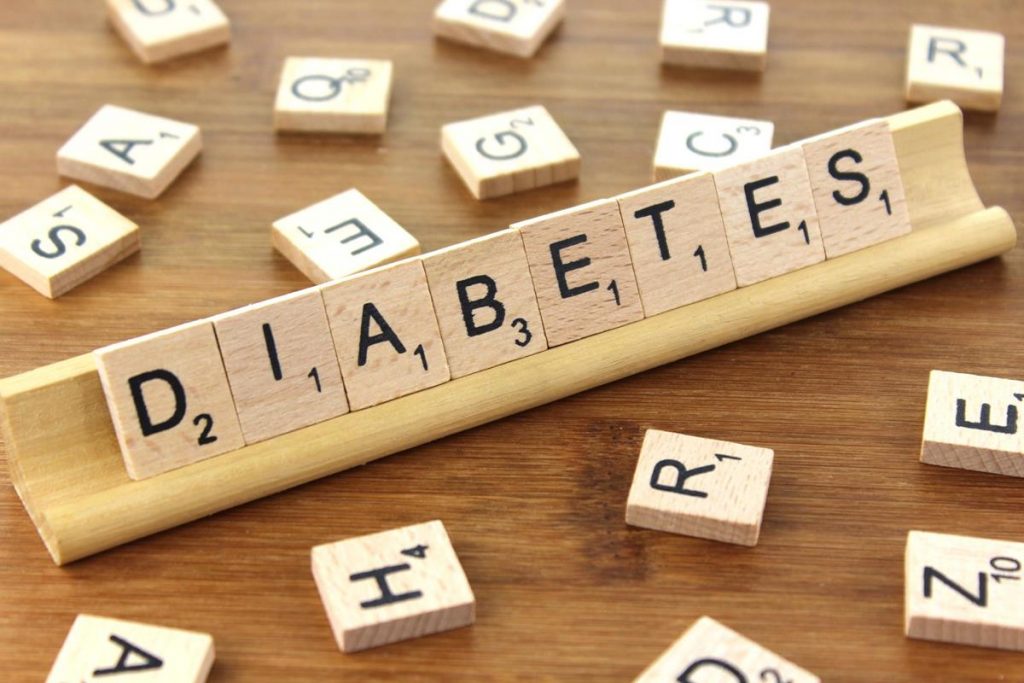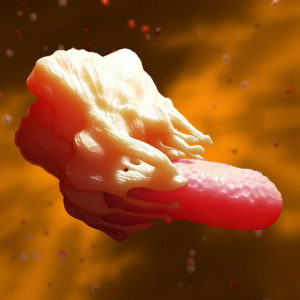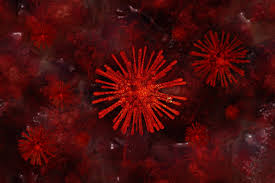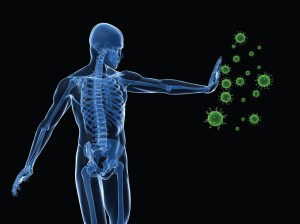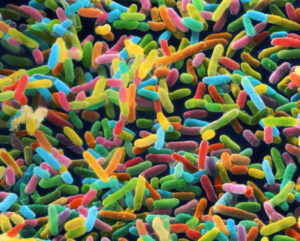Abstract
Chronic wounds are a common and costly complication of diabetes, where multifactorial defects contribute to dysregulated skin repair, inflammation, tissue damage, and infection. We previously showed that aspects of the diabetic foot ulcer microbiota were correlated with poor healing outcomes, but many microbial species recovered remain uninvestigated with respect to wound healing. Here, we focused on Alcaligenes faecalis, a Gram-negative bacterium that is frequently recovered from chronic wounds but rarely causes infection. Treatment of diabetic wounds with A. faecalis accelerated healing during early stages. We investigated the underlying mechanisms and found that A. faecalis treatment promotes reepithelialization of diabetic keratinocytes, a process that is necessary for healing but deficient in chronic wounds. Overexpression of matrix metalloproteinases in diabetes contributes to failed epithelialization, and we found that A. faecalis treatment balances this overexpression to allow proper healing. This work uncovers a mechanism of bacterial-driven wound repair and provides a foundation for the development of microbiota-based wound interventions.
INTRODUCTION
Skin injury occurs in the context of microbial communities, which can subsequently contaminate and colonize injured tissue. The “wound microbiome” is a ubiquitous component of the wound environment and has been associated with healing outcomes (1–3). Considered a silent epidemic, chronic wounds affect over 6 million people in the United States each year (4). As the number of people with chronic wounds increases, health care costs also surge, with recent estimates of 96 billion spent annually on management of nonhealing wounds (5). In addition, patients with chronic wounds experience pain, morbidity, immobility, and even social isolation (6–9). Given this mounting health care threat, there is an unmet need for improved, personalized therapies that target molecular mechanisms specific to wound pathophysiology (10). The wound microbiota and its mechanisms of interacting with host cells during repair represent a promising source of previously unidentified therapeutic targets and/or disease biomarkers.
There is growing evidence that resident skin microbes promote several components of the host skin repair and wound healing responses (11). Skin commensal bacteria can promote epithelialization and barrier function by regulating the keratinocyte aryl hydrocarbon receptor (12, 13). Commensal bacteria can modulate the inflammatory cascade needed for proper repair and regeneration of wounded skin (14–16). Immune cells that are specific to commensal bacteria are recruited after tissue damage and can promote injury repair (17–20). Colonizing skin bacteria have also been shown to promote cutaneous nerve regeneration after injury (21). These processes of inflammatory cytokine signaling, immune cell recruitment, epithelialization, and regeneration are dysregulated in chronic wounds. In addition, dysregulated inflammation, disorganized keratinocyte function, and increased peptidase activity contribute to the wound healing impairment in diabetic skin (22). Given the role of skin microbes in promoting diverse tissue repair mechanisms, we hypothesized that microbial-driven responses could be leveraged to correct these dysfunction processes that lead to nonhealing wounds.
The risk of infection as well as an incomplete understanding of the wound microbiome has led to clinical practices that seek to eradicate wound microbes. Community-wide culture-independent profiling of the wound microbiota has provided a more comprehensive, less-biased understanding of microbes that are present, as well as their dynamics during healing and complications (2, 3, 23). Although well-characterized wound pathogens such as Staphylococcus aureus and Pseudomonas aeruginosa are commonly detected by these methods, these pathogens do not exist in isolation but in communities with other microbes that are poorly characterized in the context of cutaneous wounds. We previously conducted shotgun metagenomic sequencing of 195 samples collected from 46 diabetic foot ulcers (DFUs), and by rank mean abundance, S. aureus and P. aeruginosa were the top taxa detected, followed by Corynebacterium striatum, Propionibacterium species, and Alcaligenes faecalis (24). C. striatum and Propionibacterium spp. are considered human skin commensals, while A. faecalis is considered a nonpathogenic environmental bacterium (25).
Because commensal microbes can promote many cutaneous repair processes, our objective was to examine the role of wound colonizers and to identify mechanisms of microbial-host cross-talk that contribute to healing outcomes. Here, we investigated A. faecalis, a Gram-negative rod that is frequently recovered from chronic wounds by both culture-dependent and culture-independent methods. While shotgun metagenomic sequencing indicated that A. faecalis was the fifth most abundant species, it was not associated with clinical outcomes in our DFU cohort. In a murine diabetic wound healing model, we found that A. faecalis treatment promoted early wound healing while colonizing the wound bed. A. faecalis culture supernatants induced a proepithelialization phenotype in diabetic keratinocytes, enhancing migration and proliferation. A. faecalis induces this prohealing phenotype through modulation of matrix metalloproteinase (MMP) pathways, which are overactive in diabetes and contribute to the highly proteolytic environment that is detrimental to wound healing (26–32). Thus, we uncover a previously unidentified mechanism by which a member of the wound microbiome can promote skin repair and wound healing.
RESULTS
A. faecalis is a common member of the chronic wound microbiota and promotes early wound closure in a murine diabetic model
We previously identified A. faecalis as a prevalent and abundant member of the DFU microbiome, through both culture-dependent and culture-independent methods (24). In a longitudinal prospective cohort study of 100 DFUs, we performed quantitative cultures in parallel with culture-independent methods to identify microbial bioburden associated with clinical outcomes (Fig. 1A). Cultures identified 44 A. faecalis isolates from 14 DFUs (Fig. 1B). Shotgun metagenomic sequencing indicated that A. faecalis comprised up to 38% mean relative abundance in culture-positive DFUs (Fig. 1B). Although A. faecalis was ranked 5th by mean relative abundance overall, we did not find an association with DFU outcome in our analysis (24). Our findings are supported by additional studies where Alcaligenes is consistently identified in chronic wounds other than DFUs, including pressure ulcers (PUs), venous leg ulcers (VLUs), and sickle cell disease leg ulcers (SCLUs) (Table 1) (33–40).
Despite the lack of association with clinical outcomes, the abundance and prevalence of A. faecalis in our cohort motivated us to study the direct impact of A. faecalis on diabetic wound healing. To test this, we used a 12-week-old db/db diabetic mouse model [B6.BKS(D)-Leprdb/db], which has demonstrated wound healing defects (41). We made full-thickness excisional 8-mm wounds on the shaved mouse dorsum, treated each wound with 2 × 108 colony-forming unit (CFU) of a clinical A. faecalis isolate or vehicle control, and covered wounds with Tegaderm. Wounds were photographed, and wound area was measured at days 0, 3, 7, 14, and 21 (Fig. 1C; unedited wound images in fig. S1A). A. faecalis colonization significantly accelerated wound closure at day 3 compared to vehicle-treated control (Fig. 1, C and D; P = 0.015 by Wilcoxon rank sum test). The A. faecalis–treated wounds showed no overt signs of infection and maintain well-defined wound margins (Fig. 1C). The wound bed appeared healthy despite A. faecalis colonization persisting at ~2 × 107 CFU at day 3 (Fig. 1E). Inflammatory responses during healing promote clearance of bacteria from the wound bed; partial clearance of A. faecalis occurs by day 7 and, by day 14, is completely cleared (Fig. 1E). Thus, A. faecalis colonized the wound bed in parallel to enhanced wound closure during early stages but does not persist through later stages.
These results of A. faecalis treatment are in contrast to treatment of wounds with S. aureus, a well-established wound pathogen (42). Using the same inoculum of a S. aureus clinical isolate that delayed healing in diabetic wounds (43), wound areas at day 3 were significantly enlarged compared to both vehicle- and A. faecalis–treated mice (fig. S1B; *P ≤ 0.05; **P ≤ 0.01; ****P ≤ 0.0001 by Wilcoxon rank sum test). Despite this dichotomous wound healing response, these two bacteria persisted at similar CFU on day 3 after wounding (fig. S1C; not significant by Wilcoxon rank sum test). Furthermore, at day 3, S. aureus–treated wounds have overt signs of inflammation, including erythema, purulent discharge, and macerated wound edges (fig. S1C). Unlike A. faecalis, S. aureus is not successfully cleared from the wounds, and these wounds do not heal by the day 21 experimental endpoint (fig. S1D). These results indicate that, unlike pathogenic bacteria, A. faecalis can promote early wound closure. Therefore, we sought to understand the mechanisms that underlie this microbially mediated wound closure.
A. faecalis improves the epithelialization potential of diabetic keratinocytes
We observed that the strongest effect of A. faecalis treatment occurred in the early stages of wound healing, where the critical process of reepithelialization is initiated. During this stage of healing, the wound transitions from the inflammatory phase to proliferative phase, and thus we focus on day 3 as an early wounding time point for several subsequent readouts. Successful wound closure is definitionally dependent on restoration of the epidermis or reepithelialization (44). Chronic wounds, including DFUs, are deficient in reepithelialization as well as the processes of keratinocyte migration and proliferation (44–48). For these reasons, we investigated the effect of A. faecalis on reepithelialization.
Migration by wound edge keratinocytes is required to close the gap in epithelia that is created by tissue damage and wounding. To examine keratinocyte migration, we modified an in vitro scratch wound closure assay to use primary diabetic keratinocytes derived from db/db mouse epidermis. Confluent cells were treated with 10% sterile-filtered bacterial conditioned media after creating a “scratch” by removing two-well tissue culture inserts. Cells were imaged to measure the initial gap and again after 24 hours. A. faecalis conditioned media significantly accelerated keratinocyte migration and closed the gap compared to the untreated control (Fig. 2A; **P ≤ 0.01 by Wilcoxon test). In contrast, cells treated with the same dose of S. aureus conditioned media had no change in migration compared to untreated control. These differences are not due to changes in keratinocyte viability after 24-hour incubation with the bacterial conditioned media (fig. S2A).
In addition to migration, keratinocytes must also proliferate to replace the damaged epithelia. To examine the effect on keratinocyte proliferation, we wounded db/db mice and treated wounds with A. faecalis or placebo as described above. At 3 days after wounding, mice were pulsed with 5-ethynyl-2′-deoxyuridine (EdU), which labels nascent DNA, for 1 hour before euthanasia and wound harvest. Wounds were sectioned and immunostained for cytokeratin 14 (K14) to mark basal keratinocytes and stained with 4′,6-diamidino-2-phenylindole (DAPI) to mark nuclei. The percent of EdU+ K14+ epithelial cells was determined and compared (Fig. 2B). A. faecalis treatment significantly increased the percentage of proliferating basal keratinocytes at the wound edge compared to phosphate-buffered saline (PBS)–treated control wounds (*P ≤ 0.05 by Wilcoxon test). Thus, A. faecalis also promotes proliferation of basal keratinocytes in vivo in diabetic wounds.
Keratinocyte outgrowth from skin biopsies is an established ex vivo method to assess reepithelialization potential and mimics the properties of migration and proliferation exhibited by wound edge keratinocytes (49). To test if A. faecalis influences the epithelialization potential of human diabetic skin, we obtained discarded skin from surgery patients with a diabetes diagnosis. Biopsies were created and cultured in 10% A. faecalis conditioned media or media alone for 10 days, and keratinocyte outgrowth was quantified. Explants treated with A. faecalis conditioned media resulted in significantly larger area of keratinocyte outgrowth (*P ≤ 0.05 by Wilcoxon test) compared to vehicle control (Fig. 2C). Together, these findings demonstrate that A. faecalis treatment improved the overall epithelialization potential of keratinocytes, including migration and proliferation, in both human and mouse diabetic skin.
Given our findings that bacteria-free, sterile supernatant from A. faecalis conditioned media induces the prohealing response, we hypothesized that A. faecalis exerts its effect through release of a secreted molecule. To test this hypothesis and characterize the secreted factor, we performed size fractionation on conditioned media with 3- and 10-kDa filters (Fig. 2D). If the molecule is larger than the filter size, then the activity should only be found in the larger fraction. We found that the proepithelialization activity is concentrated in both the >3- and >10-kDa fractions, indicating that the active molecule is likely larger than 10 kDa. Bacterial secreted molecules of this size are often small peptides as “small molecules” such as metabolites are definitionally <1 kDa in size. To test if the active molecule is sensitive to protease treatment, we performed the scratch closure assay with proteinase K-treated A. faecalis conditioned media. Consistent with our hypothesis, protease treatment abrogated the activity of the conditioned media (Fig. 2D). Thus, A. faecalis can induce a proepithelialization phenotype likely through secretion of a small peptide.
MMP expression in diabetic wounds is down-regulated by A. faecalis treatment
Because A. faecalis promoted epithelialization processes in diabetic skin, we next investigated the potential mechanisms. To determine how A. faecalis treatment influences transcriptional programs in diabetic wounds, we treated murine diabetic wounds with A. faecalis as described for Fig. 1B and subsequently harvested wounds after 3 days for RNA extraction and RNA sequencing (RNA-seq) (Fig. 3A). These wounds were compared to PBS-treated wounds as a negative vehicle control and S. aureus–treated wounds to represent a pathogen-mediated wound healing response.
Treatment with A. faecalis induced a distinct transcriptional profile in day 3 wounds compared to vehicle control or S. aureus (Fig. 3B). We performed unsupervised hierarchical clustering of differentially expressed genes (DEGs) of the A. faecalis–treated and vehicle-treated groups, demonstrating the modules of up- and down-regulated genes that are distinct in each group (Fig. 3C). Treatment with A. faecalis led to a greater number of significantly down-regulated genes versus up-regulated (119 versus 74, respectively). These results are in contrast to the response of pathogenic S. aureus treatment, which resulted in increased expression of many more genes (440) (fig. S3A).
A. faecalis significantly up-regulated Colq, encoding for a subunit of acetylcholinesterase, as well as the immune-related genes Cd4 and Vcam1 (Fig. 3D). Accordingly, gene ontology (GO) analysis demonstrates that the significantly up-regulated gene signatures are related to leukocyte recruitment and T cell activation (Fig. 3E). We performed a broad-based survey of the immune response to A. faecalis by performing flow cytometry on A. faecalis–treated and vehicle-treated wounded diabetic skin (fig. S3E). Total T cell receptor β–positive (TCRβ+) T cells, macrophage, and monocyte counts were similar between the two groups. However, there was a trend of increased CD4+ T cell and neutrophil recruitment with A. faecalis treatment compared to vehicle control, consistent with the up-regulated GO pathways.
Of the genes that were down-regulated by A. faecalis, the most significant were those related to MMPs, notably Mmp10 and its substrates Lamc2 and Lama3 (50, 51). The down-regulated GO pathways were accordingly enriched for signatures related to MMP activity, such as collagen degradation and peptidase activity. In contrast, S. aureus treatment led to an enrichment in GO terms related to peptidase activity, including the gene member Mmp10 (fig. S3, B and C). S. aureus also induced a much stronger signature of immune responses to pathogens, with significantly enriched GO terms for cell death, defense responses, and interferon-γ (IFN-γ) signatures (fig. S3C); none of these GO pathways were significantly up-regulated by A. faecalis. Individual genes that map to these pathways are shown in fig. S3D. Shown are multiple genes related to IFN and tumor necrosis factor signaling as well as neutrophil recruitment that are up-regulated by S. aureus treatment but are unchanged or decrease with A. faecalis treatment.
Of particular interest is the inverse pattern of MMP-related gene expression. Unlike the significant down-regulation of several MMPs induced by A. faecalis, S. aureus induces increased expression of six different MMP encoding genes, with MMP-10 being the most significantly different between the two groups (Fig. 3F; *P adjusted < 0.05; ****P adjusted < 0.5 × 10−4). During wound healing, MMP-10 is expressed by keratinocytes at the leading edge of the wound and degrades the extracellular matrix (ECM) components that provide a substrate for keratinocyte migration (Fig. 3G) (50, 52, 53). However, excessive expression of MMPs, which is promoted by diabetes and hyperglycemia, is deleterious to healing (28, 54–56). Together, our results suggest that A. faecalis promotes diabetic wound healing by inhibiting MMP expression locally to promote reepithelialization.
Reduction of excess MMP-10 mediates the proepithelialization effects of A. faecalis
We focused on MMP-10 as a potential mechanism because it was the most significantly DEG and is expressed by keratinocytes at the wound leading edge. To begin to test the hypothesis that A. faecalis is moderating MMP-10 levels to promote reepithelialization, we correlated the RNA-seq results with protein expression during diabetic wound healing. We performed immunofluorescence staining for MMP-10 on day 3 wounds (Fig. 4A). Consistent with previously reported expression patterns (52, 53, 57), MMP-10 was more highly expressed in wound tongue, nearest the wound bed, compared to sparse epidermal staining in sites distal from the wound bed. MMP-10 protein levels in the proximal wound epidermis trended toward reduction in A. faecalis–treated wounds compared to vehicle control (Fig. 4B; P = 0.081 by Wilcoxon rank sum test; sample ImageJ analysis shown in fig. S4A and no primary antibody control in fig. S4B)….

